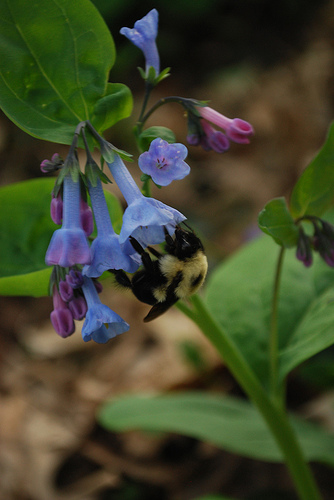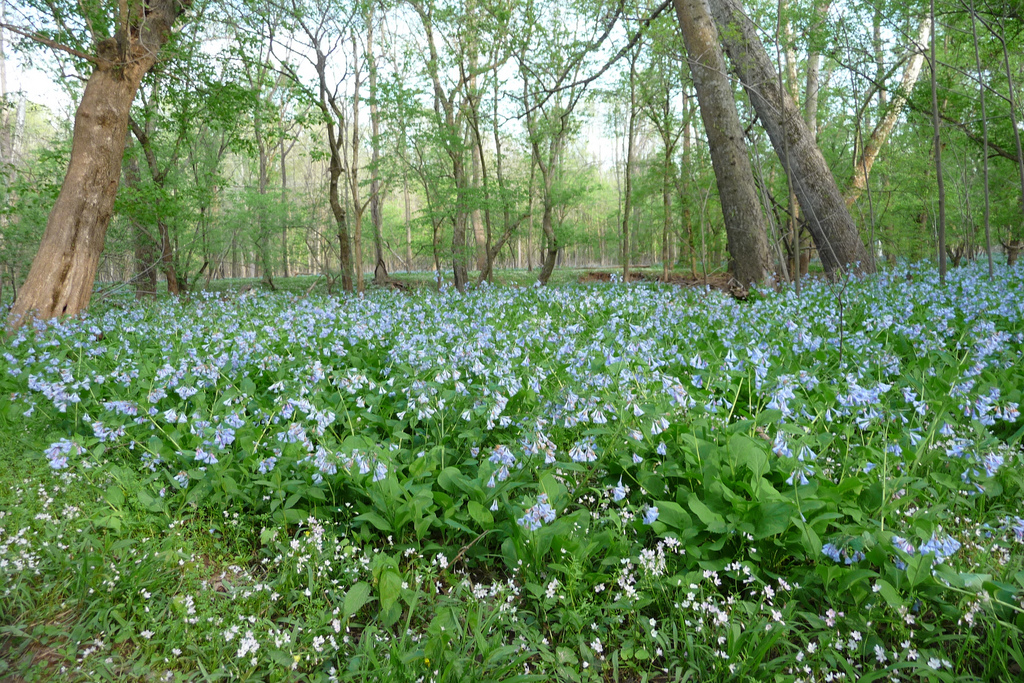Gardeners are always looking for flowers in Spring after a long winter. The earliest are often bulbs such as snowdrops, glory of snow, or crocus. Perhaps it could be a shrub or tree with early flowers such as a magnolia.
These are welcome sites to help us know we’re done with winter. None however, mean Spring has arrived to me as much as when the Virginia Bluebells awaken from their long nap.
Let’s take a look at my favorite native Spring flower.
Virginia Bluebells
Mertensia virginica
Pronounced: Mer-TEN-si-a Ver-JIN-i-ca
Using Virginia bluebells in the garden
My favorite plant combo may be when my Ice Follies Daffodils and Virginia bluebells are in bloom among my Whitespire birch.

When the daffodils are past their prime, the bluebells keep on coloring my garden in their blue and pink pastel shades.

This woodland flower also looks great planted with ferns. Also the ferns can help fill in the space when the Virginia Bluebells go dormant in summer.
Growing Virginia Bluebells
Hardiness zones: 3 – 8
Size: Grows from 1 to 2′ tall including the flower stems. Individual plants grow just about as wide.
Soil: They do fine in average soil as long as it is well drained. Since they are dormant in mid summer, they can handle drier soils then. If Spring is unusually dry, they may need a bit of watering.
Light: They do best in Shade to Part Shade. They can handle quite a bit of sun though. I have several that receive a good amount of morning and late afternoon sun and they do great.
Flowers: The flowers start off pink and gradually change to a beautiful pastel blue.
Propagation: They readily seed and will form a large colony. They are not invasive, but instead are a plant that happily gives you more when it is happy.
I no longer transplant these guys when I want them in a new area. Instead, I just cut off the flower stems before the seeds have dropped and put them where I want new bluebells. In a few years I have them.
Fall Color: They are long gone by Autumn. Their foliage will turn turn yellow and lay on the ground, so it is best to clean it up. If you have another plant like a fern or a Hosta hiding it, you might not need to bother.
Wildlife benefits of Mertensia virginica
Bumblebees will often be seen visiting the flowers of Virginia bluebells. Only the largest bees have the ability to push their way up the tube to reach the nectar.
Bluebells are also pollinated by butterflies and moths. In some areas the ruby throated hummingbird will visit the flowers.
When it forms large colonies, Virginia bluebells also provide cover for many kinds of wildlife in Spring.

What if you’re not in Virginia?
Did I mention that Virginia Bluebells were native to a large portion of the country, not just Virginia?
If you look at the map below, you might wonder, hey maybe they might as well be called Illinois or Ohio bluebells.
- Dark Green – Native to State
- Light Green – Native to County
- Yellow – Native to County but rare
- Brown – Not native to county or state (but will still often grow great)
Maybe if you take a walk in one of those light green counties you might see a scene like the one below.
Or maybe you’ll decide to create one in your yard.




Joe Passini says
2018 was a cold and late Spring. My Bluebells came up late and the Hummingbirds loved them. I watered them on the hot days to keep them blooming.